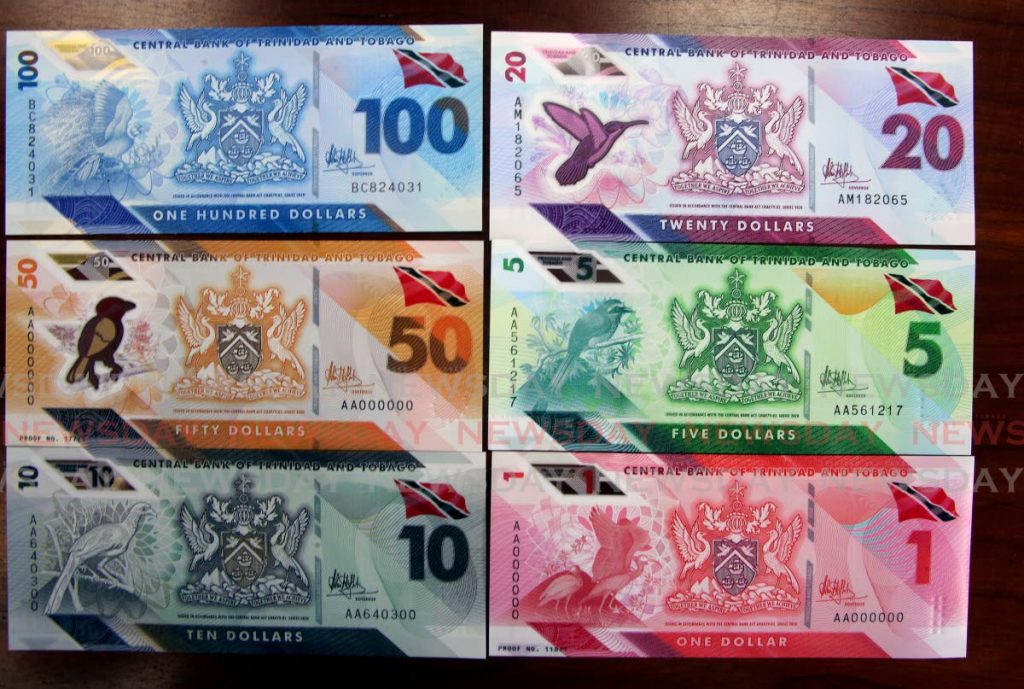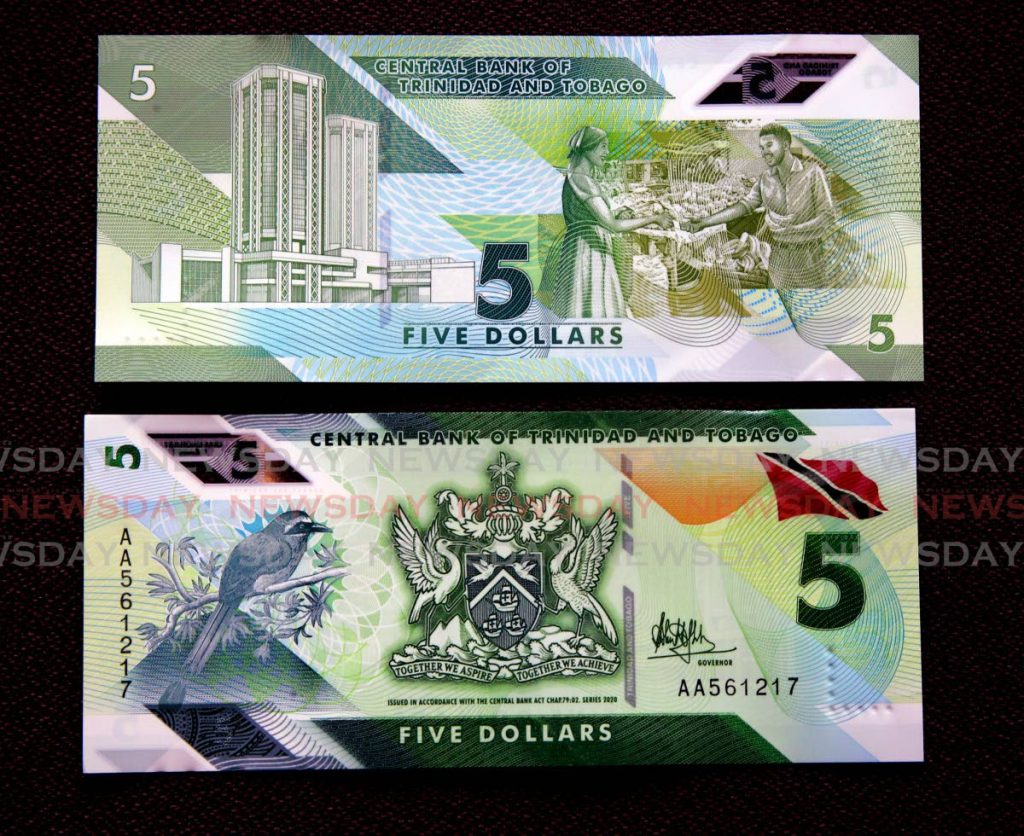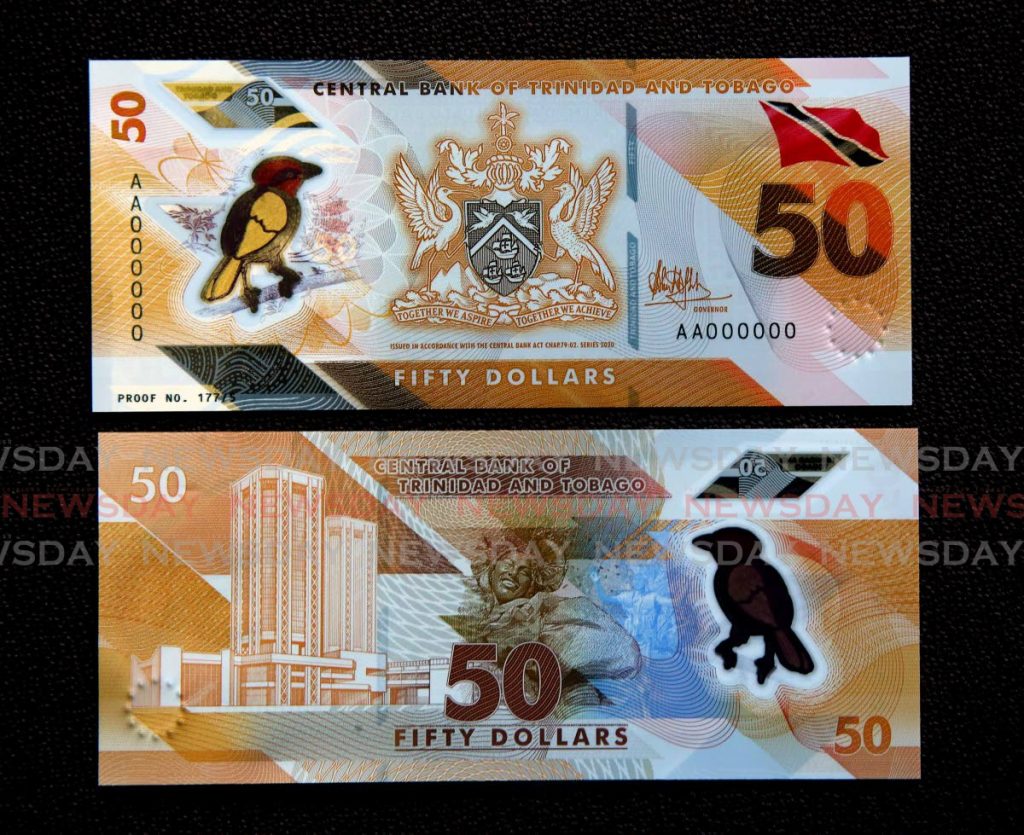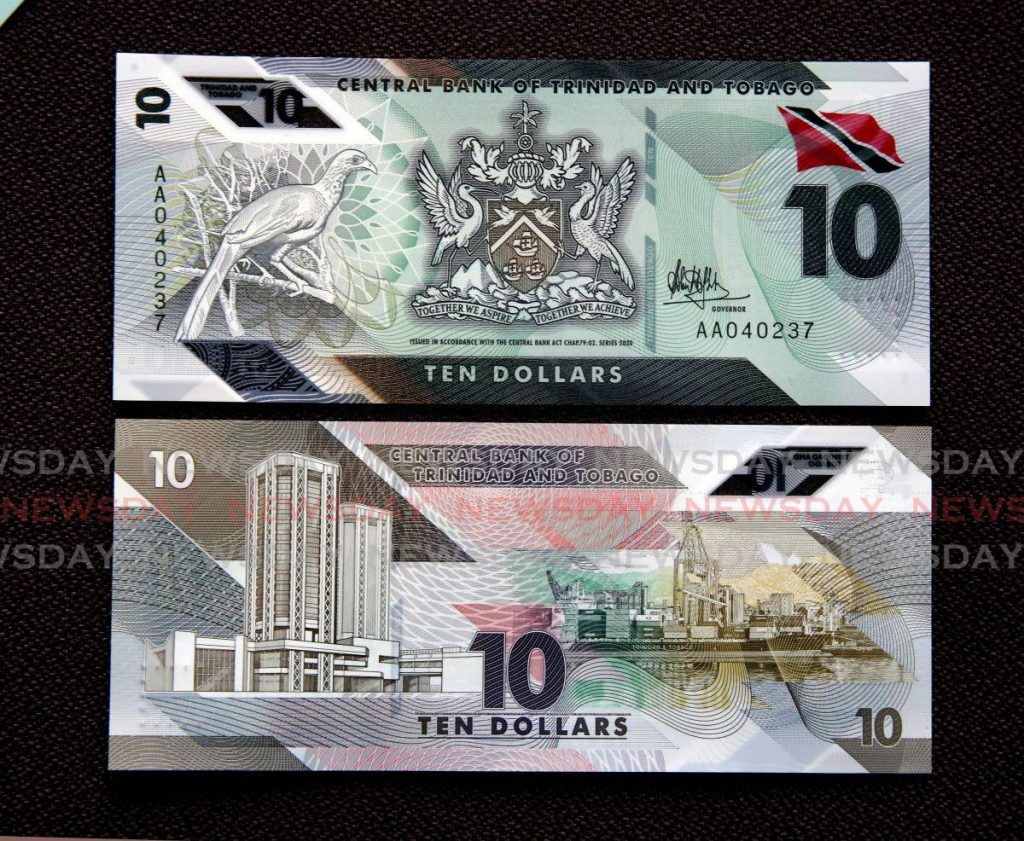Brand new bills

TT's $1, $5, $10 and $20 notes have joined the $100 and $50 bills in a polymer upgrade.
The notes are already in circulation after the Central Bank announced they would be released early in this month.
In an online media briefing on October 29, the bank unveiled the new notes and described the many features that will come with the new bill. While introducing and highlighting the features of the new bills, manager of banking operations, Sharon Villafana said the new polymer bills will retain its historic themes and general style, but will include a complement of new features which will make the bill more durable, last longer and less prone to forgery and counterfeiting.
Villafana, displaying the new notes, said the bills will retain their same colour and styles – the bills will keep their national birds, like the Mot Mot on the five dollar bill and the Cocrico on the ten dollar bill. The bills will also have the same themes such as the images of Carnival on the $20 bill.
The new bills will also have some similar security features. Tactile features used in the cotton bills as well as the metallic security thread woven into the cotton bills will return in the new bills, but the metallic thread will be printed on the bill rather than woven into it. The tactile features will be displayed on one side of the bill while the other side will remain smooth to the touch.

The bills will also have new features, the first of which is the polymer material.
Villafana said the bills will feel smoother and because of the material it will be more water resistant. Nodes printed on the bill will be more durable and will last about two and a half times longer than the cotton bills. They will also be shaped in a way to make them more identifiable to the visually impaired. The $5 bill has dots on the bottom left corner at the back in the shape of an L; the ten dollar bill has dots that make the shape of a C, and the $20 bill has dots in the shape of a triangle. The $1 bills will have two bars and the $50 bill keeps the circle used in the 2014 polymer bill.
Central Bank senior manager of external relations, Nicole Crooks expressed pride in this particular feature, saying that it would be the first time that the bills would be fully accessible to all people.
“The visually impaired have communicated with us in the past, and their concern was that they had to fold their cotton notes in different ways so they could determine which bill is which when they are reaching for the notes,” Crooks said.

Central Bank said the symbols are not braille, but were chosen based on the experience of the printers of the bills, De La Rue manufacturing company.
The bills will also have brand new security features. The clear window seen on the $100 bill will be a feature of the other bills, with their denominations displayed and visible on either side of the bill. They will also have a microprint with the denomination printed on several parts of the bill. This microprint can be seen by magnifying glass. There is also a “hide and reveal” feature, which constitutes a hidden numeral in a coloured block. It will be revealed when held up to the light.
Perhaps the most effective security feature on the bills is the colouration, which can only be seen under ultraviolet (UV) light. Once placed under the UV light a coloured pattern appears and a medallion with the denomination of the bill is revealed.
Villafana said the bills’ security features, most of which are featured in the polymer $100 bills are near impossible to copy.
“In this day and age of technology, it is easy to photocopy anything and make it look pretty close to the real thing. But when you actually evaluate the security features, no counterfeit comes close at all.”
The bill will also have one aesthetic change – the national flag. The flag will be seen at the top of the bill in bold red, white and black. Villafana said during the media briefing that this was her favourite feature as it encouraged feelings of patriotism in her, and said she could not wait to see the reaction of the general public.
Nothing to fear from introduction
The last time TT introduced a new polymer bill was last year when the cotton $100 bill was demonitised, in an effort to throw people conducting illegal activities off balance. The demonetisation exercise lasted a matter of weeks and had the desired effect of tampering with illegal activities as several people were forced to explain where they got their wealth and millions of dollars were seized by police, while investigations into how they acquired their wealth continued. The average man was also left flat-footed, as several people who had old $100 bills at home had to rush to the banks to get them exchanged.
Answering questions during the media briefing, Villafana said, this time the public has nothing to fear, as the bills will go into circulation along with their cotton counterparts.
The cotton bills will remain as legal tender, till at the earliest, the end of 2021. No decision has yet been made on the timeline for the actual demonetisation process for the cotton bills, but Villafana assured that even after the bills cease to be legal tender, people would still have ample time to trade in their old bills for new ones.

“Yes, the commercial banks will no longer accept the bills as legal tender (when that process is actually completed), but Central Bank will be indefinitely open (to facilitate) redemption,” Villafana said.
However, there is still an expectation that there would be an enthusiasm for people to exchange their old cotton bills for brand new polymer bills.
“We know that TT citizens love to get the latest thing, so I am sure the banks will have their clients asking for the new notes,” Villafana said. “But there is no need for actual fear in the public with regard to their previous experience with the cotton exchange. You will have time to acquire the notes. But we expect the country will respond favourably.”
Central Bank Governor Alvin Hilaire, said the bank took into consideration the cost effectiveness of purchasing the bills. He said the bills were 50 per cent more expensive, but because of the materials used to make them, they would last two and a half times longer than the cotton bills.
“So you see, the balance is you would be able to get more bang for the buck,” Hilaire said.
The new $5, $10 and $20 bills are expected to be introduced early in November and new $1 and $50 bills are expected to come on stream next year.
Volume of Trinidad and Tobago notes in circulation as legal tender
September 30, 2020 (to the nearest million)
$1 96 million
$5 17 million
$10 11 million
$20 19 million
$5 4 million
$100 66 million
Source: Central Bank of Trinidad and Tobago


Comments
"Brand new bills"